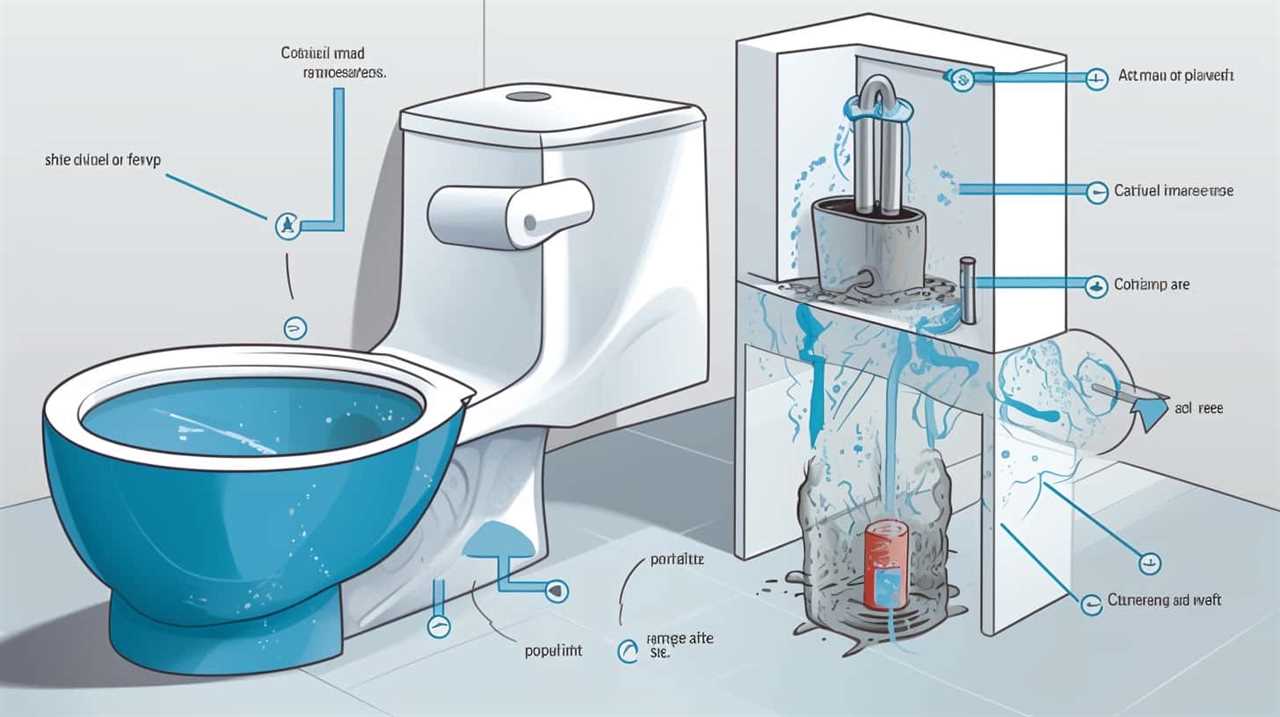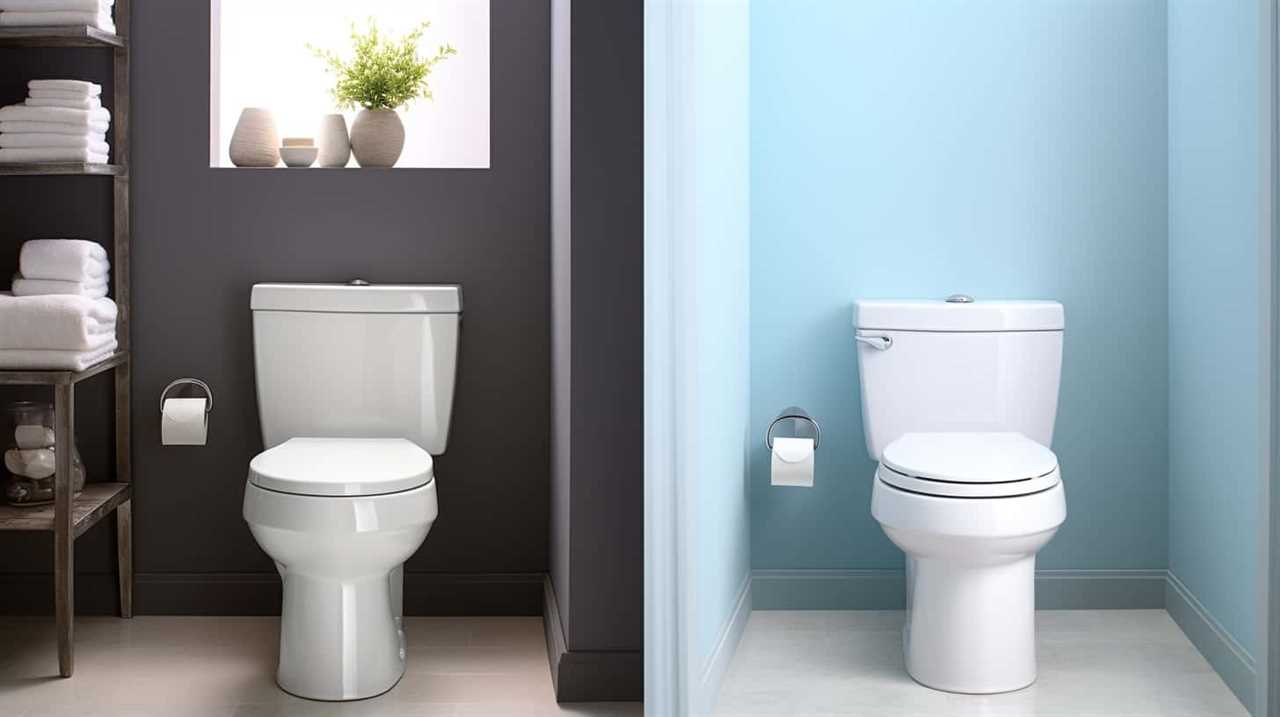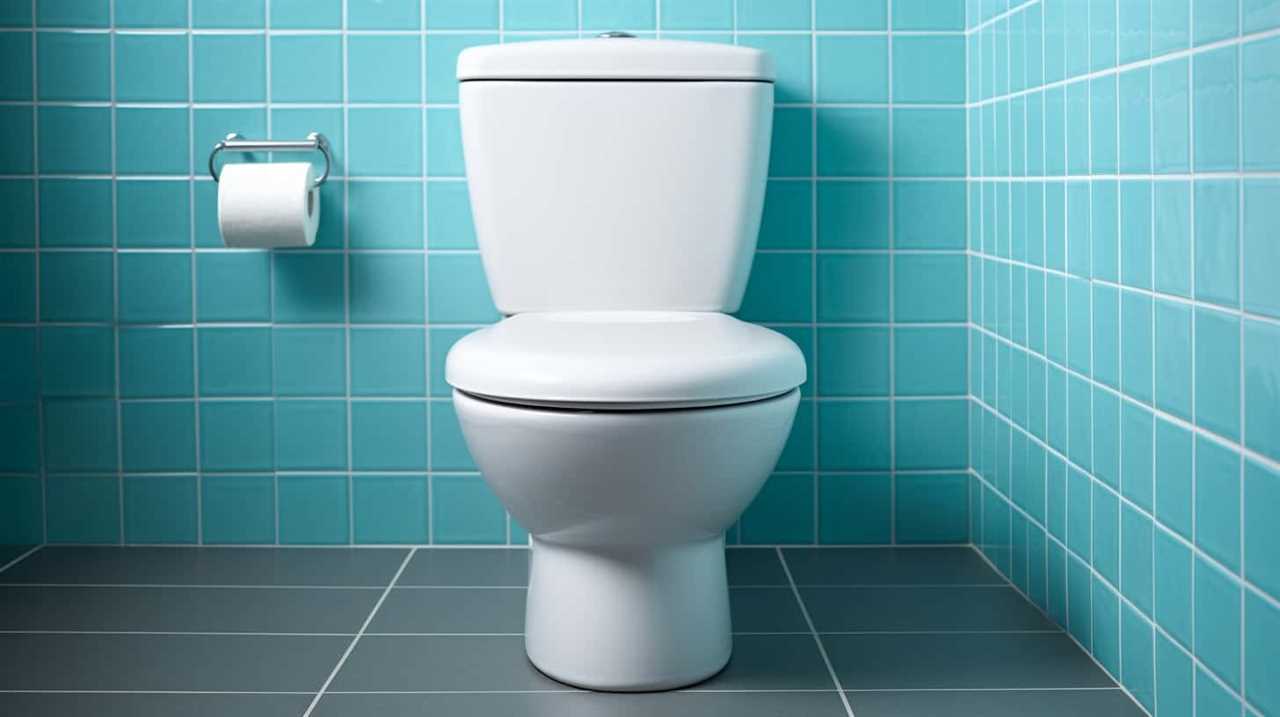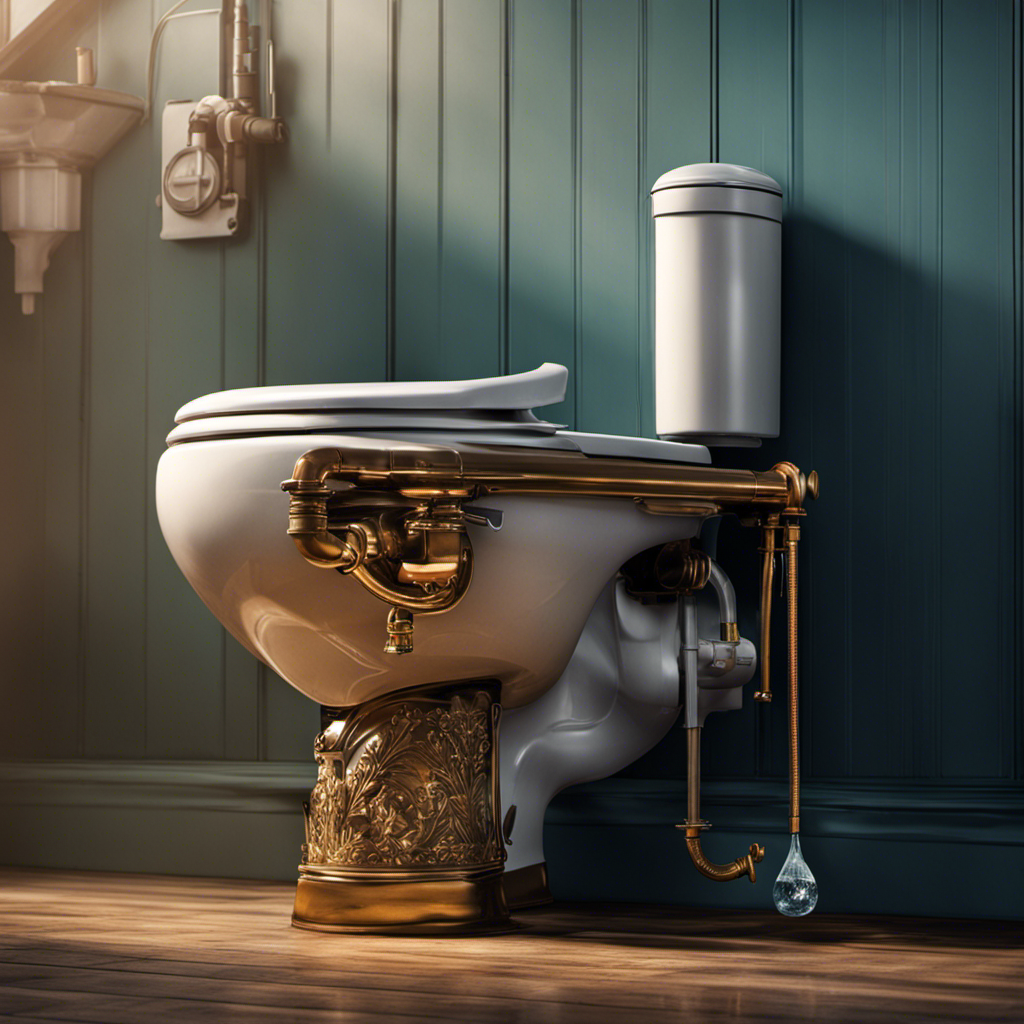Are you tired of calling a plumber every time your toilet needs fixing? We’ve all been there.
But here’s the good news: removing a toilet yourself is not as daunting as it may seem. With the right tools, safety precautions, and a step-by-step guide, you can become the master of your own porcelain throne.
In this article, we’ll walk you through the process, troubleshoot common issues, and provide you with the confidence to tackle this task with ease.
Let’s get started!

Key Takeaways
- Gather the necessary tools and materials before starting the process of removing a toilet.
- Follow a step-by-step guide for the proper removal process, ensuring safety precautions are taken.
- Be prepared for potential challenges such as rusty bolts or a stubborn wax ring, and overcome them with the right tools and techniques.
- Consider hiring a professional for expertise and handling complications to reduce the risk of further damage to the plumbing system.
Tools and Materials Needed
To remove a toilet yourself, we’ll need a few tools and materials. The toilet removal process requires specific items to ensure a successful DIY project.
Firstly, you’ll need a pair of adjustable pliers to disconnect the water supply line from the toilet. This will allow you to easily remove the tank.
Additionally, a wrench is necessary to loosen and remove the nuts securing the toilet to the floor.
It’s important to have a putty knife on hand to scrape away any old wax seal residue before installing a new one.

Lastly, to protect yourself and the surrounding area, wear gloves and have a bucket or towel ready to catch any water or debris.
Safety Precautions to Consider
Before we begin removing the toilet, it’s important for us to consider some safety precautions. Toilet removal can pose certain risks if not done correctly.
First and foremost, we need to ensure that we protect ourselves by wearing appropriate safety gear, such as gloves and safety glasses, to prevent any potential injuries.
Additionally, it’s crucial to shut off the water supply and disconnect the water line before starting the removal process to avoid any flooding or water damage.

Another important safety consideration is the proper disposal of the old toilet. We must handle it carefully to avoid any breakage or leakage, as it may contain harmful bacteria or chemicals. It’s advisable to consult local regulations or waste management services for the correct disposal method.
Step-by-Step Guide to Removing a Toilet
Let’s begin by gathering the necessary tools and materials to remove the toilet. This step-by-step guide will help you successfully remove your toilet. Before starting, it’s important to note that there may be potential challenges along the way, such as rusted bolts or a stubborn wax ring. However, with the right tools and techniques, you can overcome these obstacles.
To remove a toilet, you will need the following tools and materials:
| Tools | Materials |
|---|---|
| Adjustable wrench | Plastic trash bags |
| Screwdriver | Duct tape |
| Putty knife | Towels |
Now that you have everything you need, let’s proceed to the actual removal process. Remember, the proper disposal of your old toilet is crucial. Make sure to follow local regulations and guidelines for disposing of it safely, as it may contain harmful substances. By following this step-by-step guide and ensuring proper disposal, you can successfully remove your toilet with ease.

Common Issues and How to Troubleshoot
We encountered several common issues while removing the toilet ourselves, but we were able to troubleshoot and overcome them successfully. Here are three common issues you may encounter during a toilet removal and how to troubleshoot them:
- Leaky Wax Ring: If you notice water pooling around the base of the toilet after removing it, the wax ring may be damaged or improperly installed. To troubleshoot, replace the wax ring and ensure it’s properly seated before reinstalling the toilet.
- Stuck Bolts: Sometimes, the bolts that secure the toilet to the floor can become rusted or stuck. To troubleshoot, try using penetrating oil to loosen the bolts. If they still won’t budge, you may need to cut them off using a hacksaw or reciprocating saw.
- Broken Flange: The flange, which connects the toilet to the sewer pipe, can crack or break during the removal process. To troubleshoot, you can use a repair kit or replace the entire flange if necessary. Make sure to secure the new flange tightly to prevent leaks.
Final Thoughts and Next Steps
To wrap up our toilet removal project, let’s discuss the final thoughts and next steps.
Removing a toilet yourself can be a challenging task, but with the right tools and knowledge, it’s possible to do it successfully. However, if you’re unsure about your abilities or encounter any unexpected issues, it’s always a good idea to hire a professional.
They have the expertise and experience to handle any complications that may arise during the process. Additionally, hiring a professional ensures that the job is done correctly and reduces the risk of causing further damage to your plumbing system.

Frequently Asked Questions
Can I Remove a Toilet Without Turning off the Water Supply?
Yes, we can remove a toilet without turning off the water supply. However, it is not recommended as it can cause water damage and may require tools for a safe removal process.
Is It Necessary to Remove the Toilet Tank Before Removing the Bowl?
Toilet bowl removal and toilet tank removal are two separate tasks. It is not necessary to remove the toilet tank before removing the bowl. Each component can be removed independently for maintenance or replacement purposes.
How Do I Know if the Wax Ring Needs to Be Replaced?
To determine if the wax ring needs replacing, look for signs of leakage or a foul odor around the base of the toilet. To replace the wax ring, first, turn off the water supply, then remove the toilet and old wax ring, and finally, install a new wax ring.
Can I Reuse the Old Bolts and Washers When Reinstalling the Toilet?
Yes, we can reuse the old bolts and washers when reinstalling the toilet. However, it is important to inspect their condition and consider alternative toilet installation methods for optimal performance and longevity.

What Should I Do if the Toilet Flange Is Damaged or Broken During the Removal Process?
If the toilet flange is damaged or broken during removal, we should assess the severity. If repairable, we can use a repair kit. If not, a replacement is necessary for proper installation.
Conclusion
In conclusion, removing a toilet yourself can be a challenging but rewarding task. With the right tools, precautions, and step-by-step guide, you can successfully complete the job. Remember to troubleshoot common issues and seek professional help if needed.
By taking on this project, you’ll gain a sense of accomplishment and independence, knowing that you can handle household tasks with precision and efficiency. So go ahead, dive in, and conquer the toilet removal like a pro!










